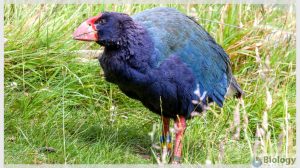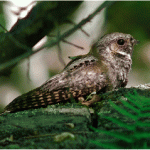
habitat
n., ˈhæbɪtæt
A place or a location where an organism lives, resides, or occurs
Table of Contents
Habitat Definition
Habitat refers to the place or the location where an organism (or a biological population) lives, resides or exists. The term habitat came from the Latin “habitātus”, meaning “having been inhabited”. Synonyms: natural home; natural environment; natural territory.
Habitat in Ecology
In ecology, a habitat is where a species of organism lives or thrives. It is the natural environment of that species. It is where it will derive its food, shelter, and mate for reproduction. It is where the species will attempt to be as adaptive as possible. Habitats may be an open geographical area or a specific site (e.g. a rotten log, a hollow tree, or inside a tree bark). They may be terrestrial or aquatic. Examples of terrestrial habitats are forest, grassland, steppe, and desert. Aquatic habitats include freshwater, marine water, and brackish water. Geographically, habitats may be classified into the following types: polar, temperate, subtropical, or tropical.
Polar habitats
Polar habitats are located on the two poles of the Earth, i.e. the northern polar region (Arctic) and the southern polar region (Antarctica). These regions are cold and windy. Tundra is an example of a polar habitat in the arctic region. It has a ground that is almost always frozen. Its top will melt in the summer and thus will allow certain plants to grow, e.g. grasses and mosses. The animals in the arctic region have special adaptations that enable them to thrive in such harsh conditions. Some of these animals are polar bears, arctic foxes, and arctic wolves. (Ref. 1)
Temperate habitats
Temperate habitats are located in the temperate regions, between the subarctic and subtropical zones. These regions have distinct seasons: summer, autumn, winter, and spring. Temperate forests are an example. (Ref. 2) They are found in eastern North America, northeastern Asia, western Europe, and eastern Europe. (Ref. 3) Compared with the forests in the tropics, the temperate forests have a simpler structure. (Ref. 3) Some of the animals that inhabit the temperate forests are the eastern chipmunks, white-tailed deer, and European robins. (Ref. 2)
Subtropical
Subtropical habitats are those found in the subtropics. They are geographically located between the tropical and the temperate zones. An example of a subtropical habitat is the subtropical deserts where palms and citrus abound.
Tropical
Tropical habitats are the various habitats in the tropics. The tropics surround the equator and therefore receive sunlight more directly than the other regions of the Earth. Hence, they have a climate that changes less dramatically; they are generally hotter and wetter. A tropical rainforest is an example of tropical habitat.
Habitat in Parasitology
In parasitology, a habitat is a location or an environment where the parasite is most likely to be found. Thus, it may be a body part of its host. For example, a head louse’s habitat is the scalp of its host. Ascaris lumbricoides is a parasitic roundworm that utilizes the intestine of its host as its habitat.
References
- Polar Regions | Habitats | WWF. (2017). World Wildlife Fund. https://www.worldwildlife.org/habitats/polar-regions
- Klappenbach, L. (2014, February 22). Temperate Forests. ThoughtCo; ThoughtCo. https://www.thoughtco.com/overview-of-temperate-forests-130170
- WWF – Discover boreal and temperate forests. (2020). Panda.Org. https://wwf.panda.org/our_work/forests/importance_forests/boreal_temperate_forests/
©BiologyOnline. Content provided and moderated by BiologyOnline Editors.







